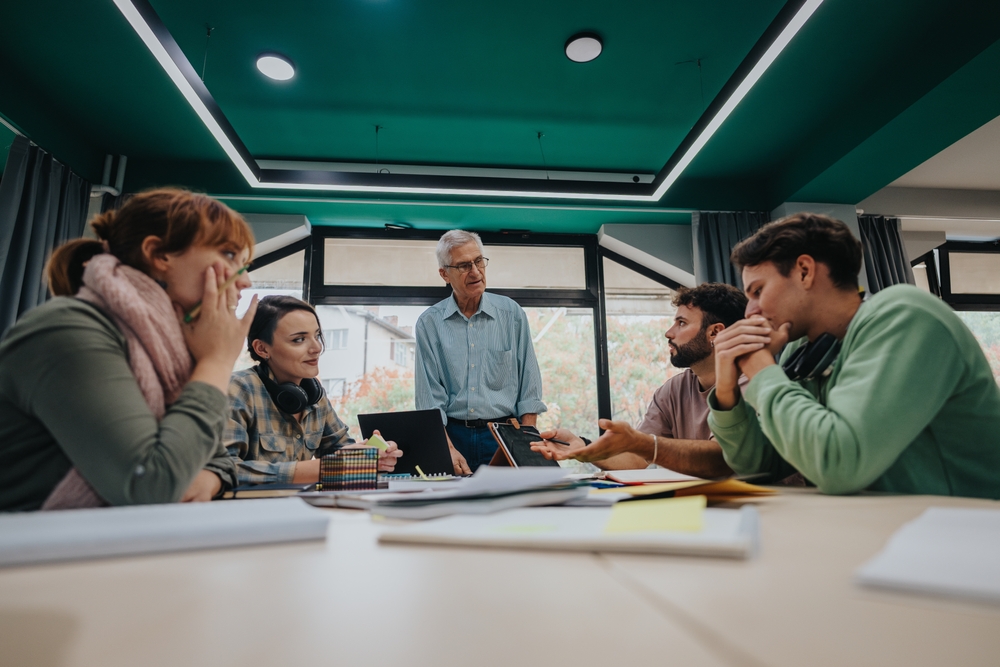Complete Overview of Elon Musk’s Education
Introduction
Elon Musk grows to become one of the world’s most famous innovators. Many people know him for SpaceX, Tesla, and AI. Few know exactly how his education built the foundation for those feats. I trace his education path step by step. I show what schools he went to, studied. It explain how choices in his education shaped his ideas and career. You will see lessons you can use in your own learning.

Early Life and Schooling in South Africa
Elon Reeve Musk came to this world on June 28, 1971. He was born in Pretoria, South Africa. He grew up in an environment with books and curiosity. His parents encouraged learning. He showed early interest in computers. At age 12, he taught himself programming. He built a video game. or sold it to a magazine.
He began his primary schooling at Waterkloof House Preparatory School. Then he moved to Bryanston High School. Later he attended Pretoria Boys High School and graduated.
He struggled sometimes socially. He faced bullying. or felt odd among other kids. and did not always speak up. But he kept reading. He kept teaching himself things outside class. He built habits of work.
High School Performance and Choices
In high school, Musk did well in many subjects. He got good scores in mathematics. He also learned languages like Afrikaans. In his final exams, he earned a 61 in Afrikaans and a B in senior maths.
He faced a major decision: military service in South Africa. it did not want to serve under the apartheid regime. He looked for ways to leave. His mother held Canadian citizenship. He used that link to apply for a Canadian passport. He managed to get it. That step opened doors.
Transition: From South Africa to North America
While waiting for the Canadian passport, Musk studied for about five months at the University of Pretoria.
In 1989, he moved to Canada. He settled first in Ontario. He worked odd jobs, on a farm and at a lumber mill. or did this work so he could support himself and pay for schooling.
In 1990, he enrolled at Queen’s University in Kingston, Ontario. He studied there for two years. He built his foundation in sciences and economics. and came up with new ideas. also met new people. or saw opportunities.
University of Pennsylvania: Dual Degrees
In 1992, Musk transferred to the University of Pennsylvania in Philadelphia. He switched to a large university with many resources. it took up two majors. or studied physics in the College of Arts and Sciences. also studied economics in Wharton School. it spent his time not only in class. He read many books, worked in labs. also asked hard questions. He discussed ideas with professors and peers, pushed himself.
In 1995, he finished his studies. He earned his bachelor’s degrees: B.S. in Physics and B.A. in Economics. However, the degree certificate came in 1997. The university formally awarded them then.
Internships and Early University-Related Projects
While at Penn, Elon Musk took internships. One was at Pinnacle Research Institute. There he worked on energy storage. He studied supercapacitors and related tech. Another was Rocket Science Games in Palo Alto. also worked on games and software projects.
He also worked nights and weekends. He did side projects. they wrote code, built small systems, learned from trial and error, failure. also built mental models. and drained his energy—but he kept going. Those efforts gave him practice. They gave him confidence.
Stanford: Graduate Program That He Did Not Complete
After Penn, Musk got accepted into a graduate program at Stanford University. He planned to pursue materials science. they felt drawn toward physics research. also felt drawn toward applied work.
He went to California to start the program. However, he left within a few days. it felt the Internet held a bigger promise than academic research. or believed he could build things instead of studying them only in theory. or chose entrepreneurship over a PhD.
How His Education Shaped His Mindset
He got a strong foundation in physics. Physics taught him to think about first principles. He broke down problems into their basic parts. He learned to question assumptions. Physics helped him see what is really possible.
He got economics too. Economics taught him about incentives, costs, trade-offs, and markets. He learned how money flows. He learned how decisions happen in business and society. That knowledge served him well when he launched companies.
He learned by doing. His internships, side projects, and self-study gave real experience. They taught him how to work under pressure. They taught him how to adapt, fail and try again.
He chose bold moves, abandoned the safer path of a PhD. He jumped into business. That move shaped his whole career. It set pace, changed risk-appetite. It taught him to bet on big problems.
Other Educational Pursuits and Self-Learning
Musk never stops learning. He reads a lot, science, engineering, biographies, history. He also learns through discussion and work, watches technology, tests ideas, studies failures. and copies useful ideas, adapts them.
It also built his own school model. and founded Ad Astra, later changed to Astra Nova. He tried to shape new forms of learning for kids. or favored hands-on learning, ethics, engineering, science. or did not emphasize standard testing. He wanted creativity.
Lessons from His Education
- Your early work matters. What you do in youth shapes your mindset. Musk’s work at 12 taught him that creation beats waiting.
- Dual foundations help. Physics + Economics gave both technical skill and market sense.
- Choosing to leave safe paths opens opportunities. Musk skipped PhD to build startups. That took risk. It yielded reward.
- Real projects teach more than classes alone. Internships and side-projects gave him leverage.
- Self-learning never ends. He keeps learning from books, people, and experiments.
Criticisms and Challenges in His Education Path
No path works perfectly. Musk had challenges. He experienced bullying in school. and felt out of place socially. He had to leave his home country, take odd jobs to support his studies. and dealt with financial stress.
Also skipped the chance to follow an academic research path. Some say that means he missed potential scientific contributions. Others say he made more impact by building companies. He traded depth in theory for breadth in practice.
His educational model experiment (Ad Astra / Astra Nova) also faced criticism. People asked if it scaled. They asked if it offered enough in arts, languages, music. Musk’s schools focused heavily on STEM and ethics. Some critics think that leaves out parts of a rounded education.
Current & Recent Education Initiatives by Musk
Musk supports educational reform. He funds schools. He experiments with new models. it shows that education can change. Its shows that students can learn differently.
He launched Ad Astra in 2014. It served children of SpaceX employees. He later transformed parts of its model into Astra Nova. They designed flexible learning environments.
He plans a university in Austin, Texas. He wants to build it more aligned with how he thinks education should work. and focuses on science, engineering, ethics, and avoiding rote learning.
Conclusion
Elon Musk’s education shows that real learning includes more than classes. It includes effort, struggle, choice, self-study, risk. His path crosses countries. It crosses disciplines. It includes technical study and economic sense, bold moves.
You can draw ideas from his path, mix what you study, take on small and big projects, read widely. You can change direction if you see a better opportunity. Your education works best when you make it yours.




